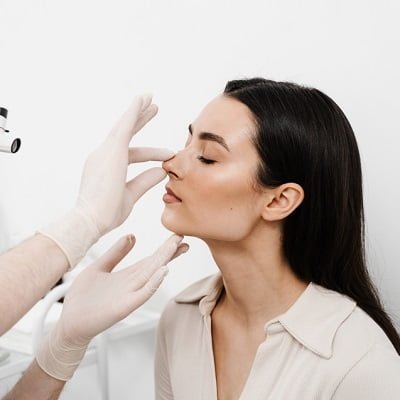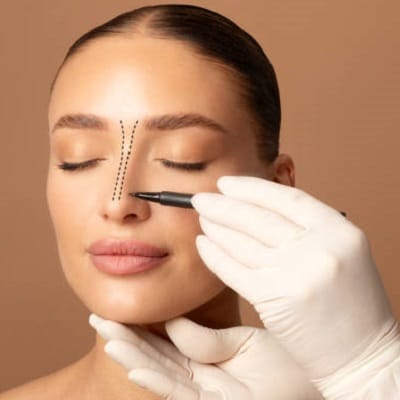
Rhinoplasty, commonly known as a nose job, is a cosmetic surgical procedure that aims to reshape or enhance the nose’s appearance. As technology and surgical techniques advance, two primary approaches have emerged in Islamabad: Open and Closed rhinoplasty.
Each method has advantages and disadvantages, catering to different patient needs and surgeon preferences. So, take a moment and read the following details!
An Overview – Open Rhinoplasty:
Open rhinoplasty involves an incision across the columella, the strip of skin between the nostrils. This approach gives the surgeon direct visibility and access to the underlying nasal structures, facilitating precise adjustments. Let’s delve into the pros and cons of open rhinoplasty.
Pros of Open Rhinoplasty:
- It gives the surgeon a clear and direct view of the nasal anatomy, allowing for meticulous adjustments. This enhanced visibility is particularly advantageous when dealing with complex cases that require detailed modifications.
- Open rhinoplasty offers more accessible access to the nasal structures when a patient requires revision surgery. This can be crucial for addressing issues arising after an initial rhinoplasty procedure.
- Surgeons often prefer open rhinoplasty for cases involving significant structural changes or intricate adjustments. Its direct access allows for more control and accuracy in reshaping the nose.
- The improved visibility and direct access can reduce surgeon fatigue during the procedure. This can lead to better surgical outcomes and decreased chances of errors.
Cons of Open Rhinoplasty:
- The common drawback of open rhinoplasty is the visible scar on the columella. While surgeons strive to make the incision as inconspicuous as possible, there is still a risk of noticeable scarring, which may be a concern for some patients.
- It may result in slightly more swelling and a potentially more extended recovery than closed rhinoplasty. This is due to the additional trauma caused by the columellar incision.
- The direct visibility afforded by open rhinoplasty comes at the cost of increased surgical time. The procedure may take longer compared to closed rhinoplasty, which could be a consideration for patients seeking a quicker recovery.
Closed Rhinoplasty:
It is also known as endonasal rhinoplasty, which involves making incisions solely within the nostrils, eliminating any external scarring. This technique has its own set of pros and cons.
Pros of Closed Rhinoplasty:
- One of the most significant advantages of closed rhinoplasty is the absence of visible scarring on the exterior of the nose. This makes it an appealing option for individuals concerned about the aesthetic impact of scarring.
- Closed rhinoplasty typically results in less swelling and a quicker recovery than open rhinoplasty. Patients may experience less postoperative discomfort and return to normal activities sooner.
- The closed approach generally requires less surgical time, making it an efficient option for patients seeking a streamlined procedure with a quicker turnaround.
Cons of Closed Rhinoplasty:
- The main drawback of closed rhinoplasty is the limited visibility and access to the nasal structures. Surgeons work through smaller incisions within the nostrils, which may make it challenging to perform intricate adjustments.
- If a patient requires revision surgery, closed rhinoplasty can present challenges due to the restricted access. Correcting specific issues may be more complex compared to the open approach.
- Closed rhinoplasty is generally considered less suitable for complex cases involving significant structural changes or requiring precise modifications. The limited visibility can hinder the surgeon’s ability to achieve optimal results in such cases.
The Bottom Line!
The decision between open and closed techniques in rhinoplasty is not universal. Based on a detailed evaluation of the patient’s distinct anatomical features, the intended results, and the surgeon’s experience, a decision should be made. Both open and closed rhinoplasty have advantages and disadvantages; the important thing is to consider these in relation to the priorities and expectations of the individual.
Patients who are thinking about having a rhinoplasty should have in-depth conversations with their doctors in order to fully comprehend the particular strategy that is being suggested and how it could affect scarring, recuperation, and the procedure’s general success.



